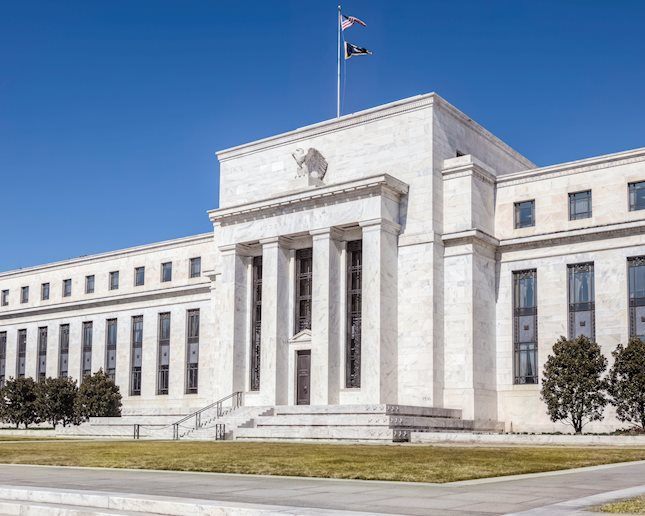- DXY holds near 108.40 on Tuesday with gains.
- Fed’s hawkish shift in December underpins higher yields.
- Markets digest strong JOLTS and ISM data.
The US Dollar Index (DXY), which measures the value of the USD against a basket of currencies, trades with gains on Tuesday after two days of losses. The Federal Reserve’s (Fed) hawkish tilt supports elevated US bond yields, favoring the USD bulls. Strong labor market and Services PMI figures helped the USD trim losses ahead of December’s Nonfarm Payrolls.
Daily digest market movers: US Dollar recovers after strong data
- US yields keep climbing, with the 10-year note near 4.64% and the 30-year at 4.87%, driven by heavy Treasury auctions this week.
- Fed Vice Chair for Supervision Michael Barr announced an early resignation effective February 28, potentially avoiding legal battles under the next administration.
- December ISM Services Purchasing Managers Index rose to 54.1 from 52.1, beating 53.3 forecasts. Prices Paid jumped to 64.4, stoking inflation concerns.
- Job Openings & Labor Turnover Survey (JOLTS) showed openings at 8.09 million in November, above both October’s 7.83 million and the 7.7 million estimate.
- ADP private payrolls, Challenger job cuts, and weekly jobless claims will round out this week’s labor market data before December Nonfarm Payrolls.
- Geopolitical tensions and potential trade war flare-ups keep safe-haven demand intact, limiting the US Dollar’s downside despite profit-taking.
DXY technical outlook: Indicators stay firm above key support
The US Dollar Index maintains an overall bullish structure, with technical indicators retaining upward momentum. Despite intraday softness, the DXY has successfully defended its 20-day Simple Moving Average (SMA), reflecting solid underlying support.
While near-term overbought signals could prompt modest pullbacks, ongoing demand for US assets and higher yields may keep the index elevated, barring any major risk reversals.
Fed FAQs
Monetary policy in the US is shaped by the Federal Reserve (Fed). The Fed has two mandates: to achieve price stability and foster full employment. Its primary tool to achieve these goals is by adjusting interest rates. When prices are rising too quickly and inflation is above the Fed’s 2% target, it raises interest rates, increasing borrowing costs throughout the economy. This results in a stronger US Dollar (USD) as it makes the US a more attractive place for international investors to park their money. When inflation falls below 2% or the Unemployment Rate is too high, the Fed may lower interest rates to encourage borrowing, which weighs on the Greenback.
The Federal Reserve (Fed) holds eight policy meetings a year, where the Federal Open Market Committee (FOMC) assesses economic conditions and makes monetary policy decisions. The FOMC is attended by twelve Fed officials – the seven members of the Board of Governors, the president of the Federal Reserve Bank of New York, and four of the remaining eleven regional Reserve Bank presidents, who serve one-year terms on a rotating basis.
In extreme situations, the Federal Reserve may resort to a policy named Quantitative Easing (QE). QE is the process by which the Fed substantially increases the flow of credit in a stuck financial system. It is a non-standard policy measure used during crises or when inflation is extremely low. It was the Fed’s weapon of choice during the Great Financial Crisis in 2008. It involves the Fed printing more Dollars and using them to buy high grade bonds from financial institutions. QE usually weakens the US Dollar.
Quantitative tightening (QT) is the reverse process of QE, whereby the Federal Reserve stops buying bonds from financial institutions and does not reinvest the principal from the bonds it holds maturing, to purchase new bonds. It is usually positive for the value of the US Dollar.
Information on these pages contains forward-looking statements that involve risks and uncertainties. Markets and instruments profiled on this page are for informational purposes only and should not in any way come across as a recommendation to buy or sell in these assets. You should do your own thorough research before making any investment decisions. FXStreet does not in any way guarantee that this information is free from mistakes, errors, or material misstatements. It also does not guarantee that this information is of a timely nature. Investing in Open Markets involves a great deal of risk, including the loss of all or a portion of your investment, as well as emotional distress. All risks, losses and costs associated with investing, including total loss of principal, are your responsibility. The views and opinions expressed in this article are those of the authors and do not necessarily reflect the official policy or position of FXStreet nor its advertisers. The author will not be held responsible for information that is found at the end of links posted on this page.
If not otherwise explicitly mentioned in the body of the article, at the time of writing, the author has no position in any stock mentioned in this article and no business relationship with any company mentioned. The author has not received compensation for writing this article, other than from FXStreet.
FXStreet and the author do not provide personalized recommendations. The author makes no representations as to the accuracy, completeness, or suitability of this information. FXStreet and the author will not be liable for any errors, omissions or any losses, injuries or damages arising from this information and its display or use. Errors and omissions excepted.
The author and FXStreet are not registered investment advisors and nothing in this article is intended to be investment advice.
Recommended content
Editors’ Picks

EUR/USD stays around 1.0300 ahead of FOMC Minutes
EUR/USD stays under heavy selling pressure and trades around 1.0300 on Wednesday. News of US President-elect Donald Trump planning to declare an economic emergency to allow for a new tariff plan weighs on risk mood. US ADP misses expectations with 122K vs 140 anticipated.

GBP/USD drops to fresh multi-month lows, hovers around 1.2350
GBP/USD remains on the back foot and trades at its weakest level since April, around 1.2350. The risk-averse market atmosphere on growing concerns over an aggressive tariff policy by President-elect Donald Trump drags the pair lower as focus shifts to US FOMC Minutes.

Gold pressures fresh multi-week highs
Gold price (XAU/USD) advances modestly in a risk-averse environment. The benchmark 10-year US Treasury bond yield holds at its highest level since late April near 4.7%, making it difficult for XAU/USD ahead of FOMC Minutes.

Fed Minutes Preview: Key Insights on December rate cut and future policy plans
The Minutes of the Fed’s December 17-18 policy meeting will be published on Wednesday. Details surrounding the discussions on the decision to trim interest rates by 25 basis points will be scrutinized by investors.

Bitcoin edges below $96,000, wiping over leveraged traders
Bitcoin's price continues to edge lower, trading below the $96,000 level on Wednesday after declining more than 5% the previous day. The recent price decline has triggered a wave of liquidations across the crypto market, resulting in $694.11 million in total liquidations in the last 24 hours.

Best Forex Brokers with Low Spreads
VERIFIED Low spreads are crucial for reducing trading costs. Explore top Forex brokers offering competitive spreads and high leverage. Compare options for EUR/USD, GBP/USD, USD/JPY, and Gold.